Tokyo Tidbits: Getting to Know Chef Maria Suzuki
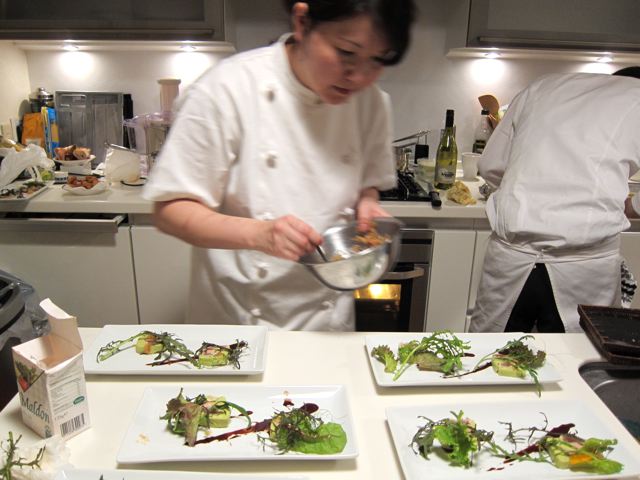
Chef Maria Suzuki was exhausted. She’d spent the last two days cooking her heart out for our second Gochiso event, Food Is Art, and it was already half past eleven when she finished packing her car for the eight-hour drive from Tokyo back to Nara. The weariness pulled at the corners of her eyes and etched lines of fatigue into her forehead. We begged her not to go, to stay one more night in Tokyo, but she was adamant.
“I’m teaching tomorrow, so I have to be back in the morning,” she said matter-of-factly. “If I’m really tired, I’ll sleep on the side of the road for a while.”
This quiet pragmatism didn’t surprise me. Chef Suzuki was no stranger to hard work. Before coming back to Japan, she’d traveled to France to study French cuisine, and then spent three years at Bouley in New York, working morning to night, six days a week.
To those on the outside, the life of a chef seems impossibly hard. The hours are ridiculous, the work relentless, and the pay just so-so, at least for most cooks on the line. After reading Heat, Bill Buford’s gritty, gossipy account of the culinary world, I came to the conclusion that most chefs were mentally unbalanced, motivated by a powerful combination of obsession and a total disregard for their physical well-being. The stereotypical image of the chef is that of a hard-ass, heavy-drinking (usually male) perfectionist who does a lot of yelling and breaking of balls.
That’s why Maria seemed so unusual. In the face of every obstacle, every snafu both major and minor, she remained poised and calm. How she’d come to possess this Kanon-like patience under pressure was a mystery to us all, until I asked her why she became a chef.
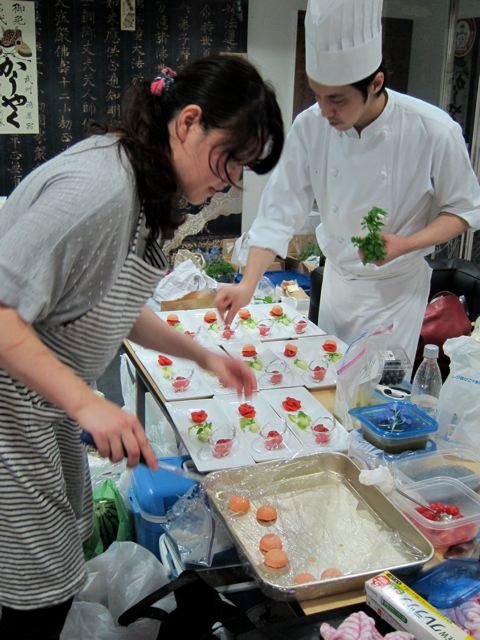
Every chef has a story. I’ve talked to a lot of chefs about how they started cooking, and many of them answer in a similar way: They’d worked in restaurants when they were young, fell in love with the scene, and discovered that they had a passion for food. Maria, however, had scarcely picked up a pan before she turned 20. She’d happily left culinary matters to her mother, an avid home cook who’d always dreamed of opening a little restaurant of her own.
Then, when Maria was 25, her mother was diagnosed with cancer. Maria helped her throughout her recovery, taking care of the household chores and helping out in the kitchen. With Maria’s assistance, her mother opened a café in the small space beside their home in Nara. But shortly after the project got underway, the cancer returned. As her mother’s condition worsened, Maria quit her job to care for her and decided to take on the responsibility of running the café as well.
“That’s when I started cooking,” she recalled. “At that time, I was learning how to cook from my mother, but I felt anxious about charging people money for my food and thought that I should really study properly somewhere.”
Her mom encouraged her to apply to the Tsuji Cooking Academy in Osaka, known for turning out some of the country’s top chefs. Maria wasn’t harboring ambitions of cooking in Michelin-starred restaurants, but it felt like the right choice, and she decided to put in her application. Sadly, only 10 days after receiving her acceptance letter, her mother passed away suddenly.
“That’s when I decided to become a chef,” Maria told me. “It was an idea that I half-inherited from my mom.”
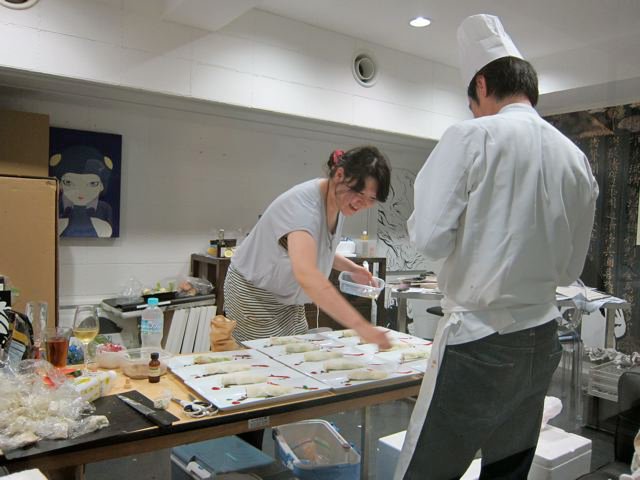
Maria threw herself into her training. The more she learned about food and cooking, the more she wanted to know. She was particularly interested in classical French technique and, after graduating from the Tsuji Academy, she moved to France to study the cuisine further.
By the time she came back to Japan, she was ready to cook in a serious restaurant. The only problem was that she didn’t have much previous professional experience, and because she was already over 30, this was a big problem. Japan suffers from an unhealthy preoccupation with age. In this country, women who are unmarried after the age of 25 are still referred to colloquially as Christmas Cakes ("Who wants them after December 25th?" I once overheard a couple of young men joking on the train), and a lot of companies are reluctant to hire people once they’ve passed the big three-oh.
So she set her sights on the US. She’d been impressed by Daniel Bouley’s fresh, fuisiony approach to French cuisine, and she pushed to get a job there, despite her lack of a work visa and imperfect English skills (the woman has chutzpah). Bouley hired her and she joined his restaurant in New York, learning the ins-and-outs of a professional kitchen and refining her palate and techniques. She was working like a dog and loving it -- at first.
After a while, the language issue caught up with her. She watched as equally talented friends and colleagues got promoted, and knew that she’d never manage to become a sous-chef, at least in New York, without mastering English.
“My plan was to get the job, move to America, and then learn English along the way, but there was never any time. I was working constantly, dealing with visa problems, and it was like I had no life,” she explained with a small sigh.
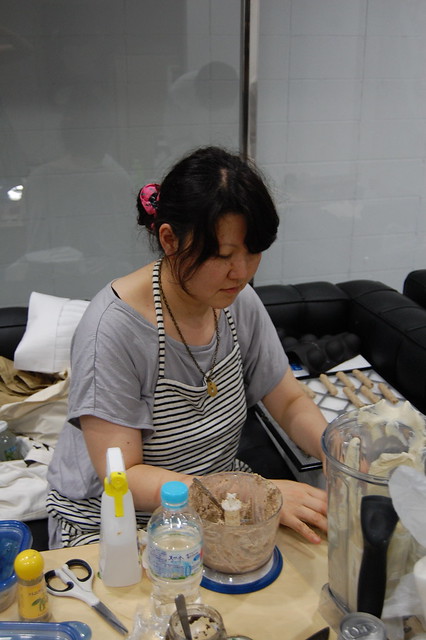
In 2010, she felt it was time to take a break and returned to Nara. She thought she’d use the time to brush up on her English (she also speaks French and Spanish) but, just before she left New York, she’d discovered the raw food movement and has been studying it intensely. Last year, she became a licensed Raw Food master and has been teaching classes on the topic, as well as working as a private chef specializing in “living food.”
Normally staid and soft-spoken, when talking about raw foods, Maria’s eyes widen with excitement and she speaks rapidly, rattling off facts about the nutritional content of flax seed and relaying anecdotes of miraculous weight loss experienced by friends who “went raw.” After years of learning how to braise, sear, and roast foods to perfection, the idea of raw foodism had held little appeal for her, until a visit to Pure Food and Wine in New York City showed her that raw cuisine that could be both extremely healthy and delicious.
But even in her enthusiasm for raw food, thoughts of her mother are never far from her mind: “I can't help thinking that if my mother had known about something like this, things may have been a little better for her,” she said.
Her passion was evident in the dishes she made for our Food Is Art event. A peach and watermelon tartare (called Stay Gold), spiked with the smoky spiciness of cumin seeds, and served alongside watermelon gazpacho, tasted of the end of summer tinged with nostalgia.
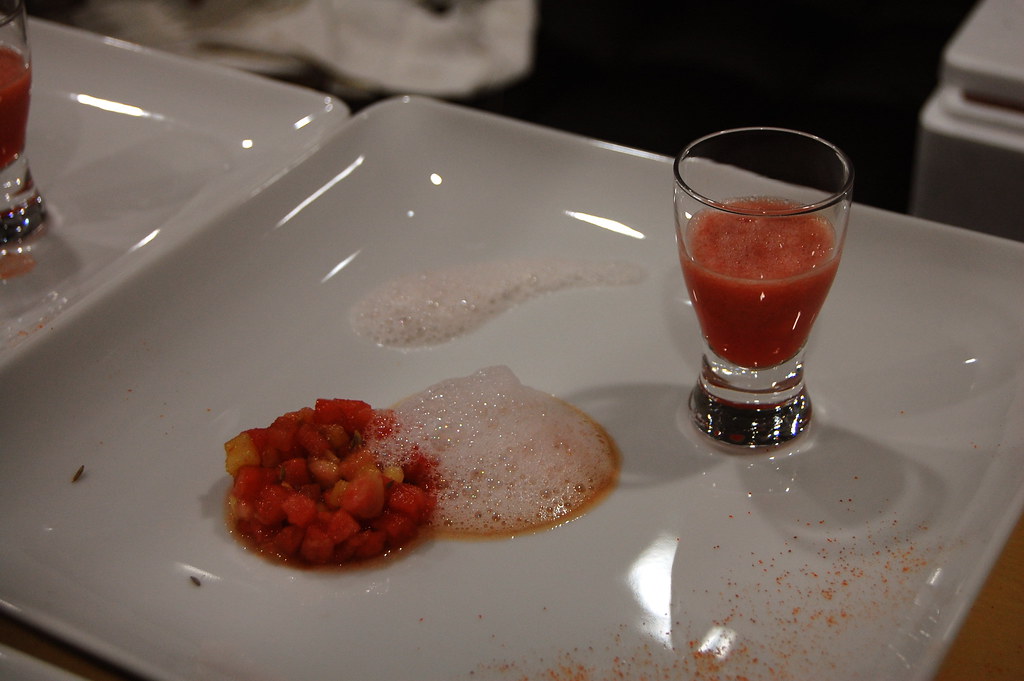
A baby shiitake mushroom log, bound with walnut cream, wrapped in paper-thin sheets of dried mushroom jus seasoned with soy sauce and truffle, was balanced on a green whip of avocado and mashed edamame beans and finished with a chiffonade of mint.

A textured dessert of chocolate mousse juxtaposed with a field of shredded coconut, colored with vibrant green matcha powder, dotted with aromatic salted cherry blossoms and splashed with an herbaceous green tea oil had a doll-house daintiness that made it almost a shame to eat.
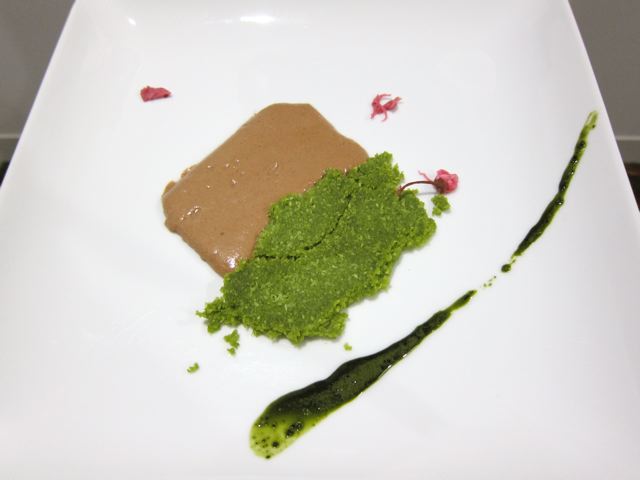
The second dessert course (called this The Son of Man, after Magritte), creamy half-spheres of almond milk panacotta rising from a pool of fennel and green applesauce, was so fresh and simple it was a revelation.
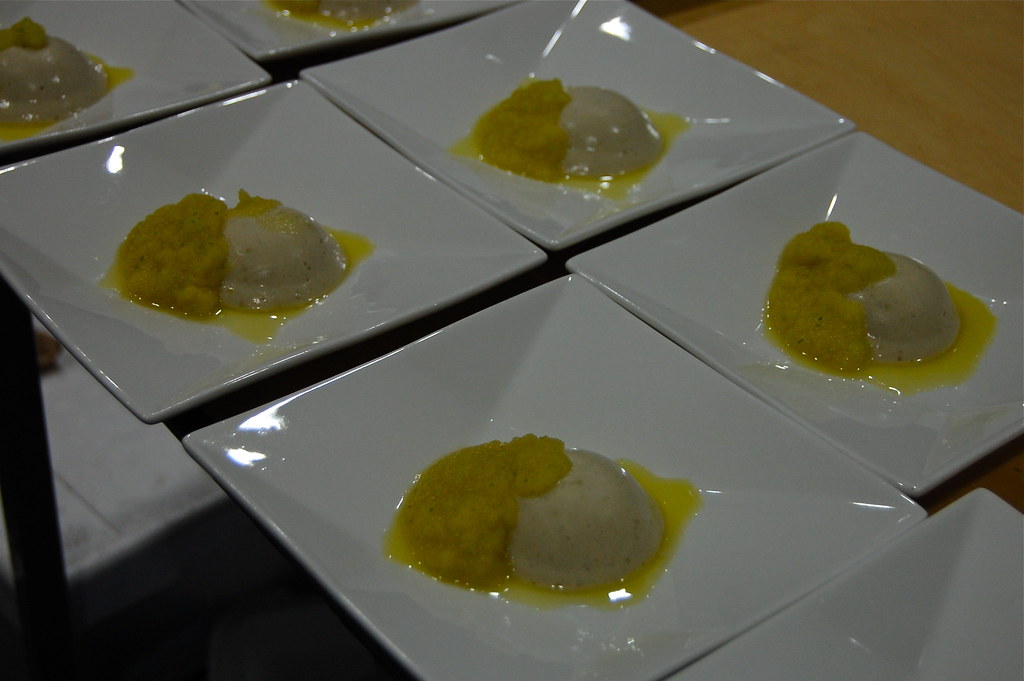
Maria’s sure that she has more to explore as a chef, but she’s still deciding exactly what she wants to do in the future. Sometimes, she’s convinced she wants to stay here; at other times, she gets itchy feet. When asked if she’d like to open her own restaurant, she hesitates for a moment as she considers the logistics of doing it in Japan, but then confesses that if she had the right business partner, she’d love to have a little restaurant of her own.
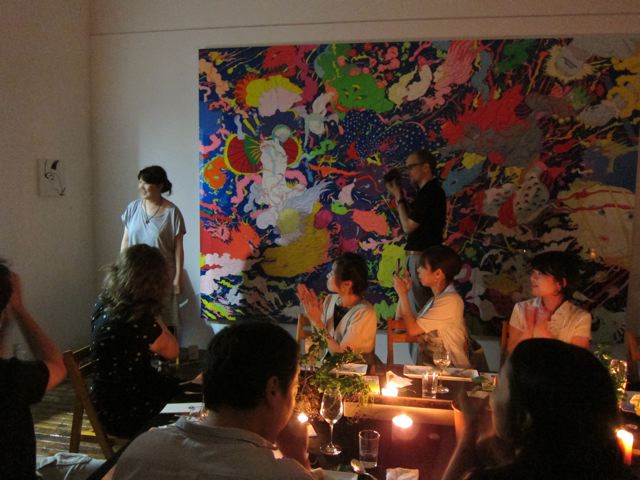
One thing is for certain: Her mom would be so proud of her.
*Melinda Joe is an American journalist in Tokyo specializing in food, drinks, and travel. A certified wine and sake professional, she chronicles her adventures in food, sake, and wine on her blog Tokyo through the Drinking Glass.
